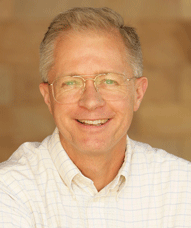ECE Seminar
Roger T. Howe: Vacuum Nanosystems for Energy Conversion
Add to Google Calendar

Micro and nano-fabricated sensors (e.g., accelerometers and gyroscopes) and actuators
(e.g., light valve chips for projection and cell-phone displays) have become commonplace
in recent years. Some of these devices must operate in a hermetically sealed, lowpressure
ambient, a need that motivated the development of low-cost, wafer-scale
vacuum encapsulation technologies. In this talk, I'll identify a promising direction for
nanotechnology, in which vacuum is more than simply the ambient surrounding a
microstructure, but rather is a critical element in device operation.
Thermionic energy converters were conceived in 1915, demonstrated in 1939, and were
the focus of astronomical investments during the space race by NASA and the Soviet
Union. A 6 kW thermionic converter, fabricated using precision machining and vacuumtube
technology, was flown in the late 1980s by the Soviets. Thermionic converters can
be fabricated using extensions of MEMS technology, in which advances in materials,
micromachining, and vacuum encapsulation processes can be used to enhance
performance and reduce fabrication costs. Potential commercial applications include
topping cycles in small-scale co-generation. Recently, a new conversion concept has
been demonstrated at Stanford, in which a semiconductor photocathode replaces the
conventional metal cathode. This photon-enhanced thermionic energy (PETE) converter
harvests photon energies above the bandgap, as well as broad-spectrum radiation through
heating of the photocathode. It is attractive as the high-temperature topping cycle for
solar-thermal power stations. Micro- and nano-structured, high-temperature materials
and micromachining processes are also essential to fabricating wafer-scale, cost-effective
PETE converters. I will conclude by summarizing the research directions that are needed
to bring thermionic and PETE conversions into the mix of energy conversion options.
Roger T. Howe is the William E. Ayer Professor in the Department of Electrical Engineering at
Stanford University. He received a B.S. degree in physics from Harvey Mudd College and an
M.S. and Ph.D. in electrical engineering from the University of California, Berkeley in 1981 and
1984. After faculty positions at CMU and MIT from 1984-1987, he returned to Berkeley where
he was a Professor until 2005. His research interests include nano electromechanical system
design, nanofabrication technologies, with applications in energy conversion and biomolecular
sensing. A focus of his research has been processes to fabricate integrated microsystems, which
incorporate both silicon integrated circuits and MEMS. Prof. Howe has made contributions to the
design of MEMS accelerometers, gyroscopes, electrostatic actuators, and microresonators. He
was elected an IEEE Fellow in 1996, was co-recipient of the IEEE Cledo Brunetti Award in 1998,
and was elected to the U.S. National Academy of Engineering in 2005. He co-founded Silicon
Clocks, Inc., a start-up company commercializing integrated MEMS resonator-based timing
products, which was acquired in April 2010 by Silicon Laboratories, Inc. He is the Faculty
Director of the Stanford Nanofabrication Facility and in September 2011, became Director of the
National Nanotechnology Infrastructure Network (NNIN).
 MENU
MENU 
